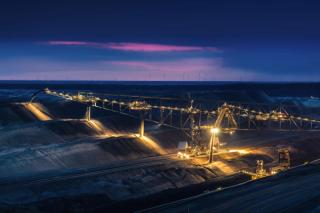
Cultural heritage: Indigenous and cultural heritage values driving sustainable development
by Flavia Kiperman
View post

Offshore wind energy is a significant opportunity for Australia, aimed at helping achieve our net zero target by 2050. The technology has been proven in other parts of the world, both in terms of its technical viability and environmental sustainability. It is now up to all Australians to support what can become a key part of our new energy economy. In this article, our team explores what this opportunity means, and where some of the challenges and solutions are.
The prospect of being able to introduce offshore wind technology into Australia provides exciting and new opportunities in many sectors. The enormity in scale of connecting offshore wind farms into our electricity grids requires significant amounts of planning and thought. This is not only for the power generation infrastructure to be constructed in our oceans, but also for the essential infrastructure along our coastline to make these projects happen. Port facilities, transportation corridors, operations and maintenance hubs, substations and transmission lines are some of the key onshore project components requiring upgrades and new build construction. There is also the requirement of connecting offshore wind farms to the grid, which requires significant amounts of planning and analysis work to ensure electricity supply to consumers is always available.
Opportunities and challenges for the offshore wind industry are extensive when preparing for and delivering this significant step change in energy supply. The project delivery model requires a truly multidisciplinary approach, collaborating with all tiers of government and involving the public and private sector.
Here is a selection of our project considerations:
Similar to other global regions, offshore wind farms in Australia will be built for long-term (40+ year) operation. Therefore, long-term strategic planning commences well before project inception. The importance of thoughtful planning is heightened in and around Ports where land is often already constrained, and securing access to further land is crucial for setting aside areas for turbine component marshalling, testing prior to deployment offshore, construction, storage etc. This is not only a challenge for project developers, but also Port operators and governments who need to prioritise planning to protect and incentivize development for the supporting industries. Road and rail connections/upgrades are two crucial aspects which will enable offshore wind development. Having been involved in many road and rail business cases and strategic planning studies, our team knows and understands the lead times associated with various gateways and approvals. The time pressure is real for these larger enabling pieces of infrastructure to be budgeted, planned, designed and built in order to support offshore wind.
Authentic engagement is an essential building block of social licence to operate and has become a fundamental expectation for project communities. To minimise the risk of offshore wind projects being derailed by community outrage, proponents need to recognise the value of working collaboratively with local communities, and First Nations Peoples to achieve more meaningful outcomes and gaining richer insights into the intersection of their business and the communities in which they operate.
Local knowledge and community participation in the decision-making process is a critical factor for the successful roll out of offshore wind projects across the country. Creating co-designed benefit sharing models with community and First Nation people will drive better economic and social value outcomes to impacted communities and ensure that social value outcomes are shared.
As engagement specialists, SLR is mindful of the cumulative impacts on communities from multiple projects in the area. As an industry, we need to also have a national narrative that takes communities on the journey to net zero and highlights the opportunities for them to participate and the important role they play in us achieving this target.
Clear, timely and consistent government regulations on how and where offshore wind farms will be developed and operated is key to encouraging private sector development. Factors contributing to the regulatory and commercial stability include:
Offshore wind assets and infrastructure will be built for an operational lifetime spanning at least 40 years. In that time, the impacts of climate change are forecast to intensify. How we adapt to these impacts needs to be considered throughout the full project lifecycle of all offshore wind projects, including their supply chain. This consideration extends from business case stage, procurement, design, operation, maintenance, and decommission. Storm-tide surge, intense wind gusts, increased wave energy, extreme rainfall and rising sea levels are just some of the weather events that designers, operators, and maintainers will have to account for. The importance of considering the impacts of extreme climate events on operational resiliency cannot be understated.
Some of the clear gaps in the domestic product supply chain that will require extensive review and investigation include:
While these may be a selection of our project considerations, there are many other critical project considerations that will assist the successful implementation and operation of offshore wind farms. For example, coordinated scheduling across multiple wind farm developers to identify efficiencies, when various shared services are required to come online, and where common infrastructure components such as large substation transformers will be required, are all critical to holistic project success.
Our team has the experience to support clients navigate offshore wind planning, design, operation and maintenance activities. Reach out to Ash, Luke, Esther or Lachlan if you wish to discuss further and learn more.

by Flavia Kiperman

by Jasper Schrijvers , Matthew Hoare

by Clodagh Connolly, Nicola Inge, Andres Schottlaender